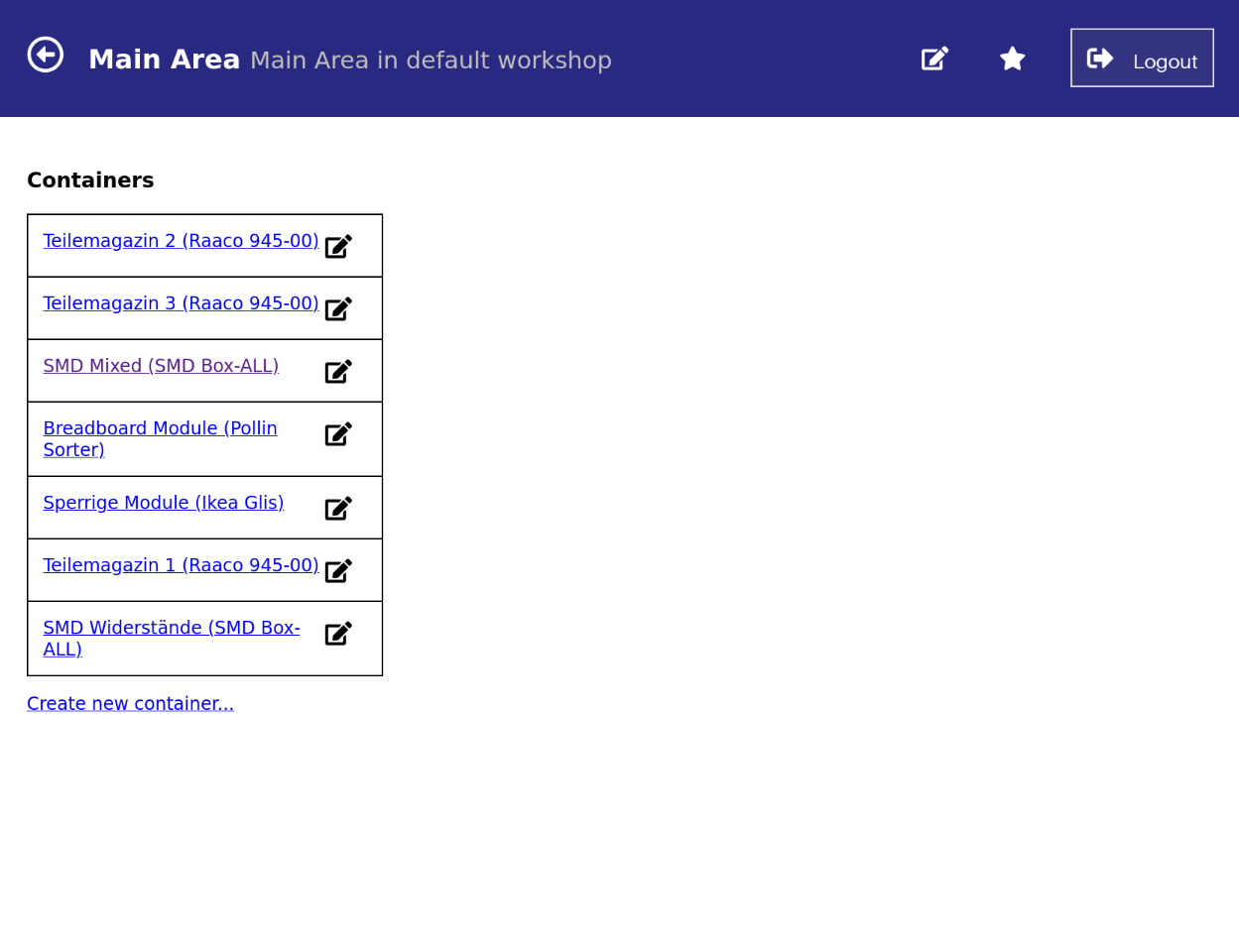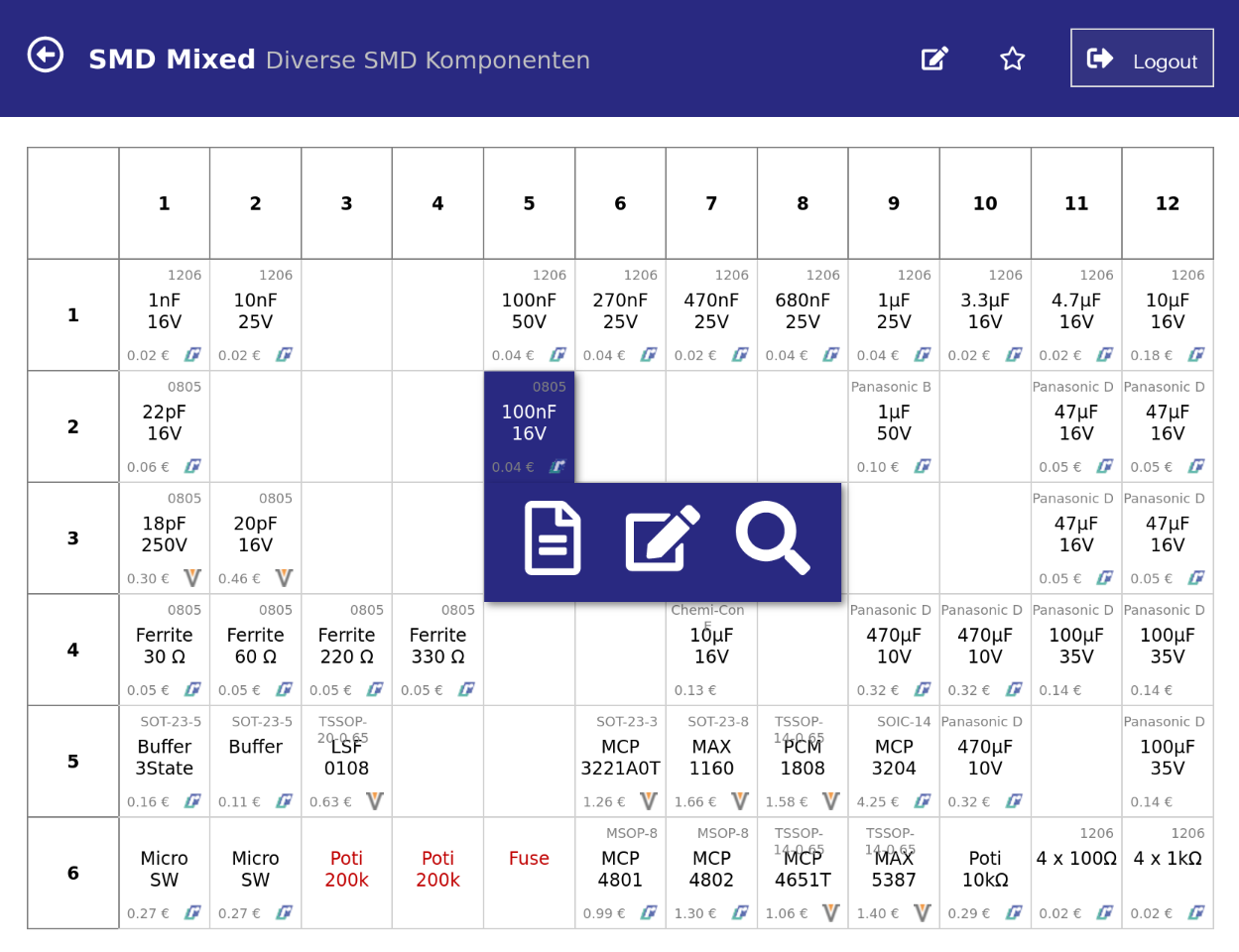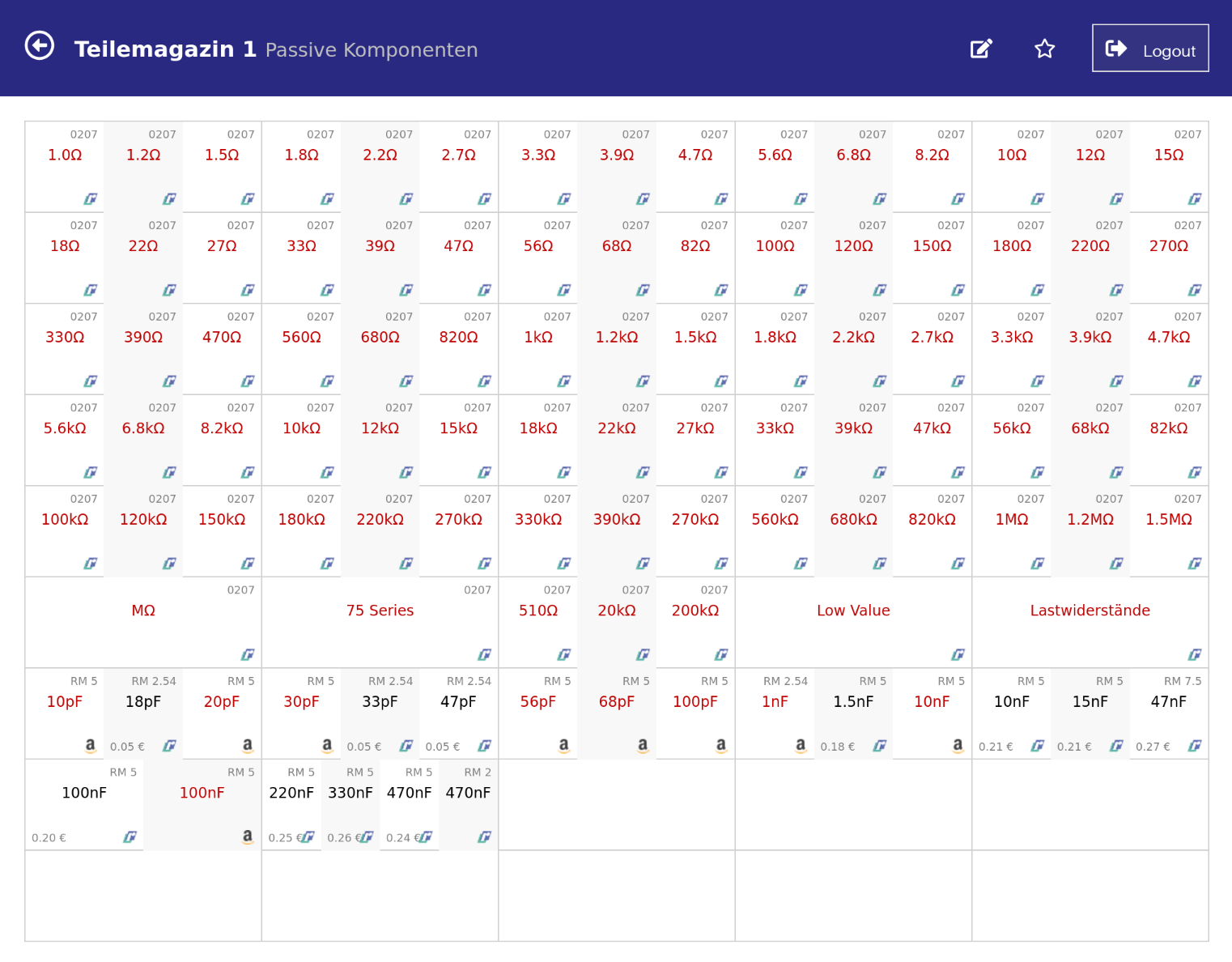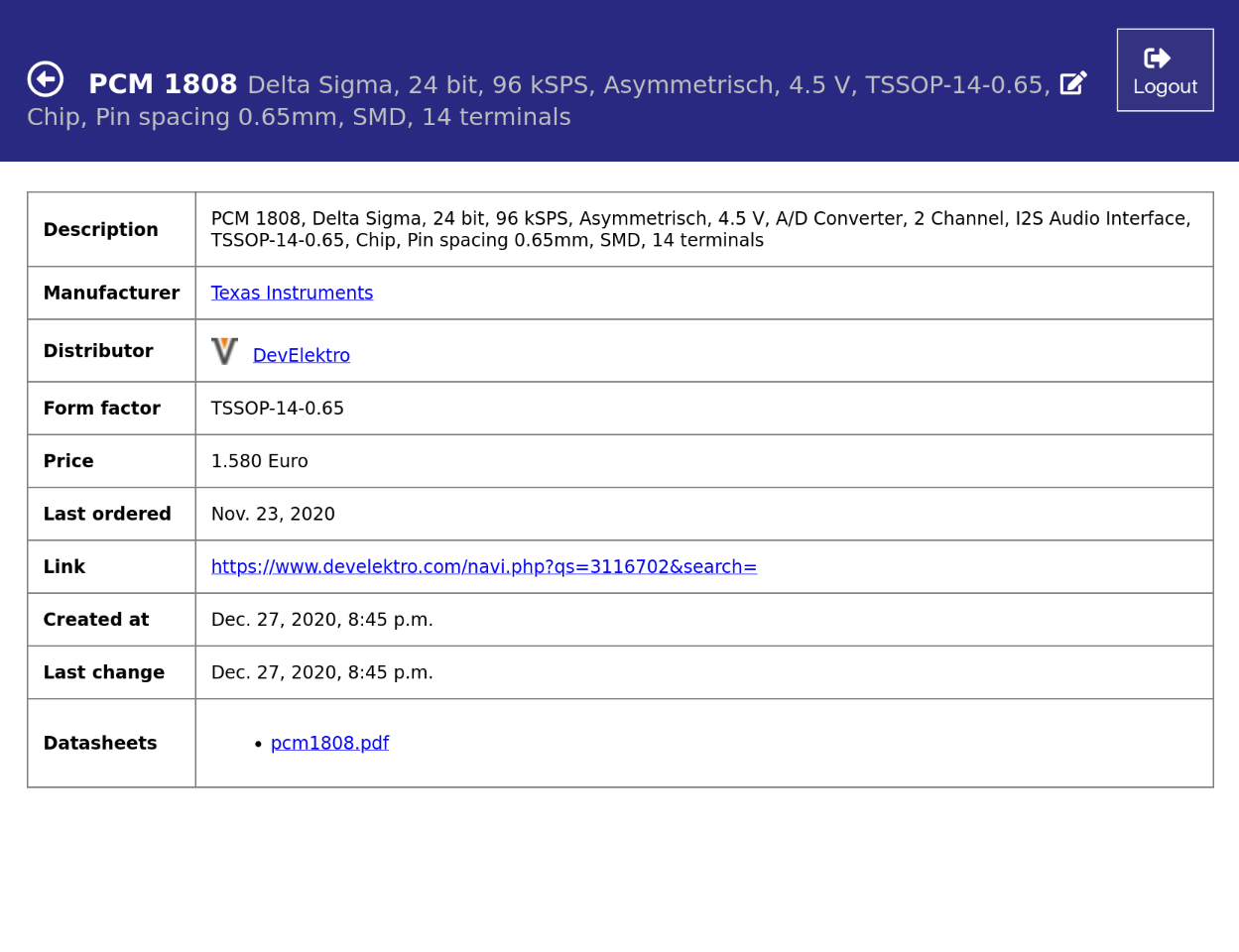This project is a small parts inventory management system. It is thought out to be a flexible parts database which keeps all relevant information as well as datasheets, prices and a visual representation where you stored the part.
The idea is that the system may tell you in which compartment of which box in what area of your workshop you have to search for to find the part you currently need. It has been optimized to store information for electronics parts and small other hardware like screws, nuts and bolts.
As configured by default you will need the following:
- A postgres database named
inventorywith a postgres userinventorythat may connect without password or by default with the passwordinventory - Python > 3.10
- Poetry to install requirements and create a virtualenv
This is a standard Django 5.0 application, if you know how to deploy those the following might sound familiar:
- Checkout repository:
git clone https://github.com/dunkelstern/inventory.git - Change to checkout:
cd inventory - Install virtualenv and dependencies:
poetry install - Migrate the Database:
poetry run python manage.py migrate - Create an admin user:
poetry run python manage.py createsuperuser - Run the server
- Development server (not for deployment!):
poetry run python manage.py runserver - Deployment via
gunicornon port 8000:poetry run gunicorn inventory_project.wsgi -b 0.0.0.0:8000
Then login on http://localhost;8000/admin/ for the Django admin interface or
go to http://localhost:8000 to enter the inventory management system directly
- The initial DB migration pre-populates the database with some useful defaults and some pre-defined distributors and form-factors usable for electronics inventories as well as a "Default Workshop" to be able to navigate everything.
- For editing parts the Django admin interface is used, so edit-links will only
appear if the currently logged in user is a
staffuser (set the checkbox in the admin area).
here we have a layer of containers, you may nest multiple containers into each other, for example to define a cupboard which contains multiple boxes of parts, or multiple rooms in your workshop that contain cupboards, etc.
This is a container that contains parts. You may define your layouts (number of compartments, number of items per compartment and layout of compartments themselves) all by yourself in the admin backend, by default the database comes with an assortment of Ikea and Raaco sorter boxes.
The Overview and Box views are designed to be used on a touch-screen and the HTML, CSS and Javascript are designed to work on older Hardware (Apple iOS 9 has been tested at lowest, so this works from iPad 2 up to the newest pro).
This is the detail view of a part, this is useful to find all parts by manufacturer or distributor, or when a part has multiple datasheets.
Editing is done on the standard Django admin interface, so all users that have no staff privileges only can view all parts, all with staff privileges have access to the django admin backend and can edit parts too.




